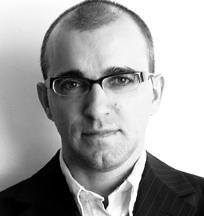« Features
The Global Art Fair Or How ARCO Invented the ‘Experiential’ Art Fair
The 20th century knows basically three typologies of art fairs: modern, contemporary and global. The Armory Show represents the modern, or “artist-frame-to-frame,” art fair: organized by the Association of American Painters and Sculptors in 1913 in New York, it represented 1,300 works hanged frame-to-frame on the walls in 18 partitioned spaces, with Walter Pach as representative sales broker. The iconic-type contemporary, or “dealer-booth-and-alley,” art fair was staged by Art Cologne in 1967 and Art Basel in 1970. They were organized by dealers in up-to-date fair settings, with a general uncurated section and a structure of booths and alleys with no panels and no parties. Finally, an example of a classic global, or “corporate-experiential,” art fair was the Global Art Fair (GAF), which debuted in the mid-1990s and was organized by such private or state corporations as ARCO-and later Frieze and Art Basel Miami Beach-before it turned the art fair into an ‘experience’ showcasing global art as well as a full range of artistic and extra-artistic activities.
Since mid 1990s, the GAF has been accepted as the most typical type of presentation, riding the wave of neo-liberalism and global art (Belting, Weibel et al) and aiming to present transnational art while it offers a whole set of heretofore unknown experiences inside and outside the fair premises.
HOW ARCO INVENTED THE GLOBAL EXPERIENTIAL ART FAIR
Under the leadership of Rosina Gómez-Baeza, it was the Spanish art fair ARCO in Madrid that set the pace for the “experiential” model that since the mid-1990s has slowly become the international standard. Gómez-Baeza launched Arco News, a quarterly magazine about collecting and the art market, and the Encounters of Contemporary Art, both in 1987; Arco Video in 1988 (let’s recall that the Bankverein Video-Kunstpreis at Art Basel started in 1994); in 1994 Focus Country, a special section of the fair dedicated each year to a guest country that kicked off with Belgium, curated by Jan Hoet; the section Major Collectors at Arco in 1995, with panels and conferences on curating, public and private collecting (Art Basel Conversations kicked off in 2004); the Cutting Edge section, focused on emerging art, in 1996 (Art Basel launched a section of solo projects by emerging artist titled Statements later the same year); and the Project Rooms, dedicated to the presentation of solo shows, in 1998 (Art Basel launched Art Unlimited in 2000). The thought-provoking series of panels, curated sections, performances, prizes, international collectors, curators and other art professionals mixed with the numerous parallel openings and parties that museums and other institutions staged in Madrid made ARCO clearly different, festive and the model to follow, as even Sam Keller admitted.

Pablo Helguera, Untitled ( 2012-18), Artoon. Courtesy the artist and Jorge Pinto Books Inc, New York.
Now the main question is: Why was ARCO and not Art Basel able to pull off today’s “experiential art fair model?”
One part of the answer is, as Lukas Gloor has explained referring to Art Basel, that in the 1980s the “concept of the fair [...] was stagnating,” the Exhibitor’s Advisory Board had to be changed, “making way for its rejuvenation,” and “competition was threatening the art fair on various fronts” as “new fairs with more ambitious goals were established in Chicago, Madrid and Paris.”1 The other part of the equation is that, unlike most other fairs, ARCO was and still is a publicly funded art fair. The who-is-who of the art world came to Madrid, from Hou Hanru and Okwui Enwezor to Glenn Lowry, Ute Meta Bauer and Barry Schwabsky, among others. Back in April 2005, the now director of Art Basel Marc Spiegler wrote in The Art Newspaper that, “Tellingly, Madrid’s ARCO, which boasts the most ambitious discussion programme of any art fair, held only one panel on arts criticism this February, compared to six on collecting art and five on curating.”2
To give you a more precise idea: In 2015, ARCO allocated 1.5 million euros from its 4.5-million-euro budget to invite 300 collectors and 285 art professionals from 41 countries!3 Until Art Basel began teaming up with UBS at the end of 1998, it wasn’t able to start financing activities that would complement the core business of the fair. Arco also became the paradigm of the Global Art Fair as it was par excellence the fair for art from Latin America and through its focus country section-Australia, Canada, Korea, Argentina, Mexico, etc.-it enabled the participation of galleries and artists from around the globe.
After ARCO, most other fairs, like Art Basel, Frieze and FIAC were forced to copy the model, of which Art Basel Miami Beach is by far the wildest and most ludic exponent. Art Cologne was the first contemporary fair, Art Basel has proved to be the most resilient and important fair in this ultra competitive market, but it was ARCO who invented the ‘experiential’ art fair that has become the global model since mid 1990s. Been there, done that and got the t-shirt.
NOTES
1. Lukas Gloor, “Art Basel-From International Art Fair to Global Art Forum,” in Esther Baur, Patrick Kury (eds.), In Step with Time. From Swiss Industries Fair to MCH Group. Basel: Christoph Merian Verlag, 2016, 257-272.
2. Marc Spiegler, “Do Art Critics Still Matter?” The Art Newspaper (April 2015), http://www.marcspiegler.com/Articles/Artnewspaper/ArtNewspaper-2005-04-Critics.htm (accessed November 14, 2018).
3. ARCO, press release, http://www.ifema.es/arcomadrid_06/prensa/notasdeprensa/ins_049806 (accessed November 14, 2018).
Paco Barragán is a PhD candidate at the University of Salamanca (USAL) in Spain and the former visual arts curator of Centro Cultural Matucana 100 in Santiago, Chile. He recently curated “Juan Dávila: Painting and Ambiguity” (MUSAC, 2018), “Arturo Duclos: Utopia´s Ghost” (MAVI, 2017) and “Militant Nostalgia” (Toronto, 2016). He is the author of The Art to Come (Subastas Siglo XXI, 2002) and The Art Fair Age (CHARTA, 2008).




































Leave a Reply
You must be logged in to post a comment.